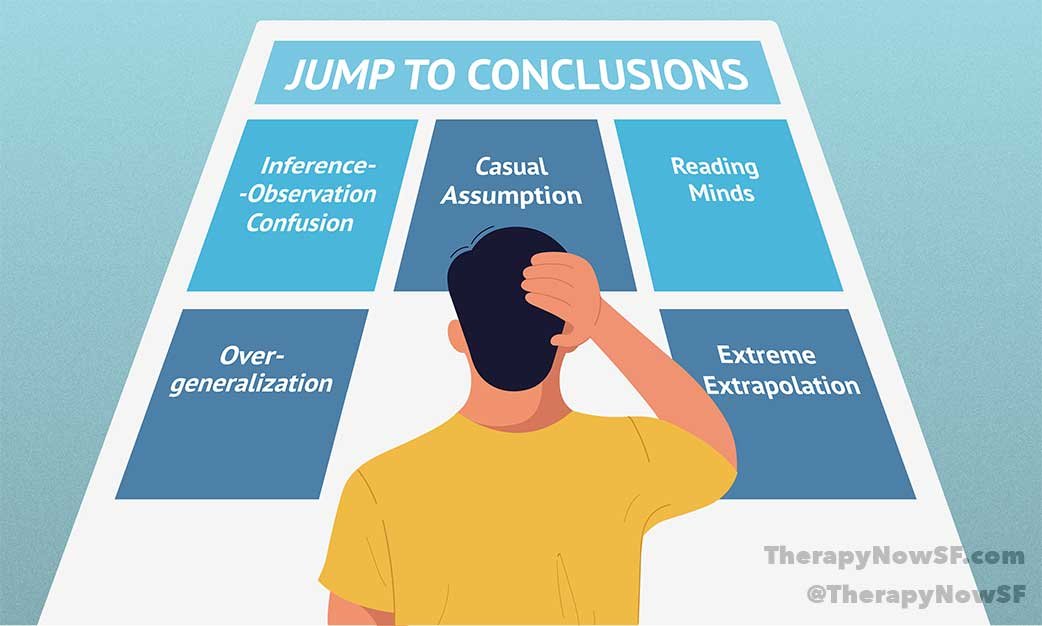In our day-to-day life, we often find ourselves assigning blame for things that don’t go as planned.
These everyday inconveniences can lead to bouts of frustration and annoyance.
But for those dealing with anxiety and depression, the blame game can take a darker turn, often manifesting as a cognitive distortion known as personalization.
“... characterized by a pervasive pattern of negative self-talk and constant feelings of guilt and self-doubt”
Exploring the Psychology of Blame
The act of blaming can be seen as a way to cope with discomfort or to make sense of events that are otherwise difficult to understand. It is intrinsically linked with our psychological need for control and predictability. When something disrupts the balance of our lives, assigning blame gives us a sense of power over the situation. Yet, for some, this tendency can become harmful, leading to a cycle of self-blame or unjust blaming of others. This leads us to the phenomenon of personalization.
Definition of Personalization
Personalization is a cognitive distortion where individuals attribute the entire blame for an event or situation on themselves or others, even when there is little to no justification for doing so. It is a misplaced sense of responsibility that does not account for external factors or circumstances beyond one's control. This blame could be directed towards oneself or unfairly projected onto another person.
The Mechanics of Personalization
This cognitive distortion often emerges from a complex interplay of past experiences, core beliefs, and emotional responses. It can be a learnt behavior, arising from environments where individuals were made to feel excessively responsible. Over time, this pattern of thinking solidifies, turning every situation into an opportunity for self-blame or wrongful accusation.
Symptoms of Personalization
Personalization manifests in many ways. It's characterized by a pervasive pattern of negative self-talk and constant feelings of guilt and self-doubt. This might include blaming oneself for another's dissatisfaction or feeling personally targeted by someone’s behavior, even when it has nothing to do with you. It also includes feeling intentionally excluded when you see a group interacting without you, or assuming that you have control over situations that are inherently unpredictable or uncontrollable.
The Effects of Personalization
The repercussions of personalization extend beyond self-perception, often influencing interpersonal relationships and overall mental health. It can lead to:
Furthermore, it can strain relationships as individuals either shoulder unnecessary blame or unjustly assign it to others.
Who Is Most at Risk of Personalization?
While everyone can fall into the trap of personalization to some degree, individuals suffering from depression and anxiety-related disorders are particularly vulnerable. Often, these individuals have a history of trauma such as physical, emotional, or sexual abuse, or childhood loss, which exacerbates this cognitive distortion.
How to Stop Personalizing
Overcoming personalization requires concerted effort and sometimes professional help. Seeking counseling is a crucial first step, particularly for those grappling with the effects of past trauma.
Deep Dive: Strategies to Combat Personalization
A couple of self-help strategies can be beneficial in the battle against personalization.
Check Your Control: Whenever you find yourself starting to personalize, ask: "What factors in this situation do I truly control?" More often than not, you’ll realize that you had little control over the circumstances leading to the event.
Check Your Responsibility: Similarly, when blaming yourself for others' feelings or reactions, ask: "Am I really responsible for how they feel?" Unless you've directly caused their emotional response, the answer is likely "no".
Role of Mindfulness, Meditation, and Counseling
Along with the above strategies, mindfulness and meditation can be extremely helpful. Practicing mindfulness enables you to be present and aware of your thoughts and feelings without becoming overwhelmed by them. This can help you recognize when you're starting to personalize, providing an opportunity to counteract this negative thinking pattern.
Meditation, on the other hand, can help you achieve a state of calm and focus, reducing stress and anxiety that often fuel personalization. Regular meditation can help shift your mindset and build resilience against cognitive distortions.
Counseling, particularly cognitive-behavioral therapy (CBT), is also an effective approach in combating personalization. CBT helps you identify and challenge your distorted thought patterns, equipping you with practical strategies to change your thinking and behavior.
Final Thoughts: The Journey Towards a Happier Life
The journey to stop personalizing and start living a more contented life is one that requires patience, kindness, and perseverance. But remember, it is absolutely possible. Countless individuals have successfully overcome personalization and are now living healthier, happier lives.
In your journey, remember to treat yourself with kindness, recognizing that it's okay to make mistakes and that you cannot control everything. With mindfulness, self-compassion, and perhaps some professional guidance, you can break free from the shackles of personalization. Remember, each step you take towards overcoming personalization is a step towards a happier, healthier you.






